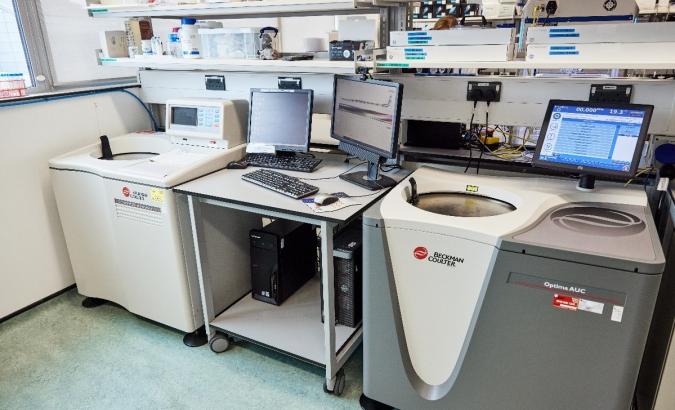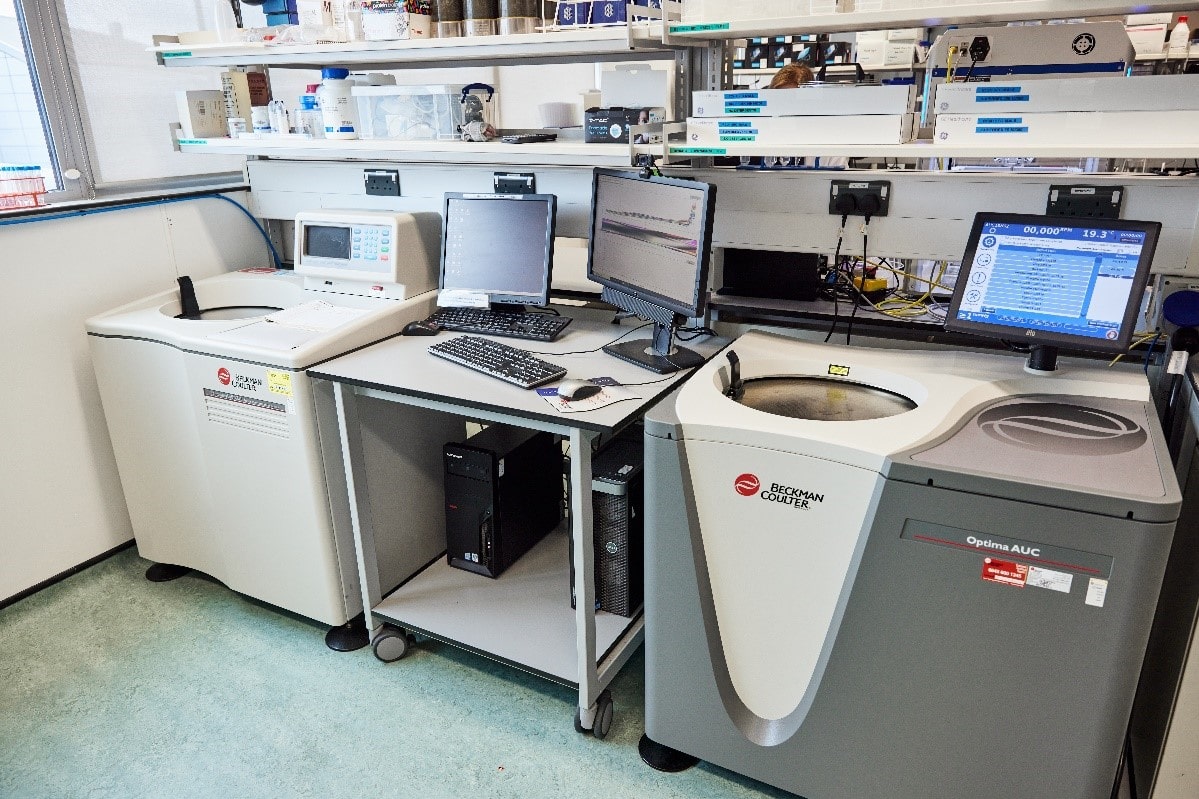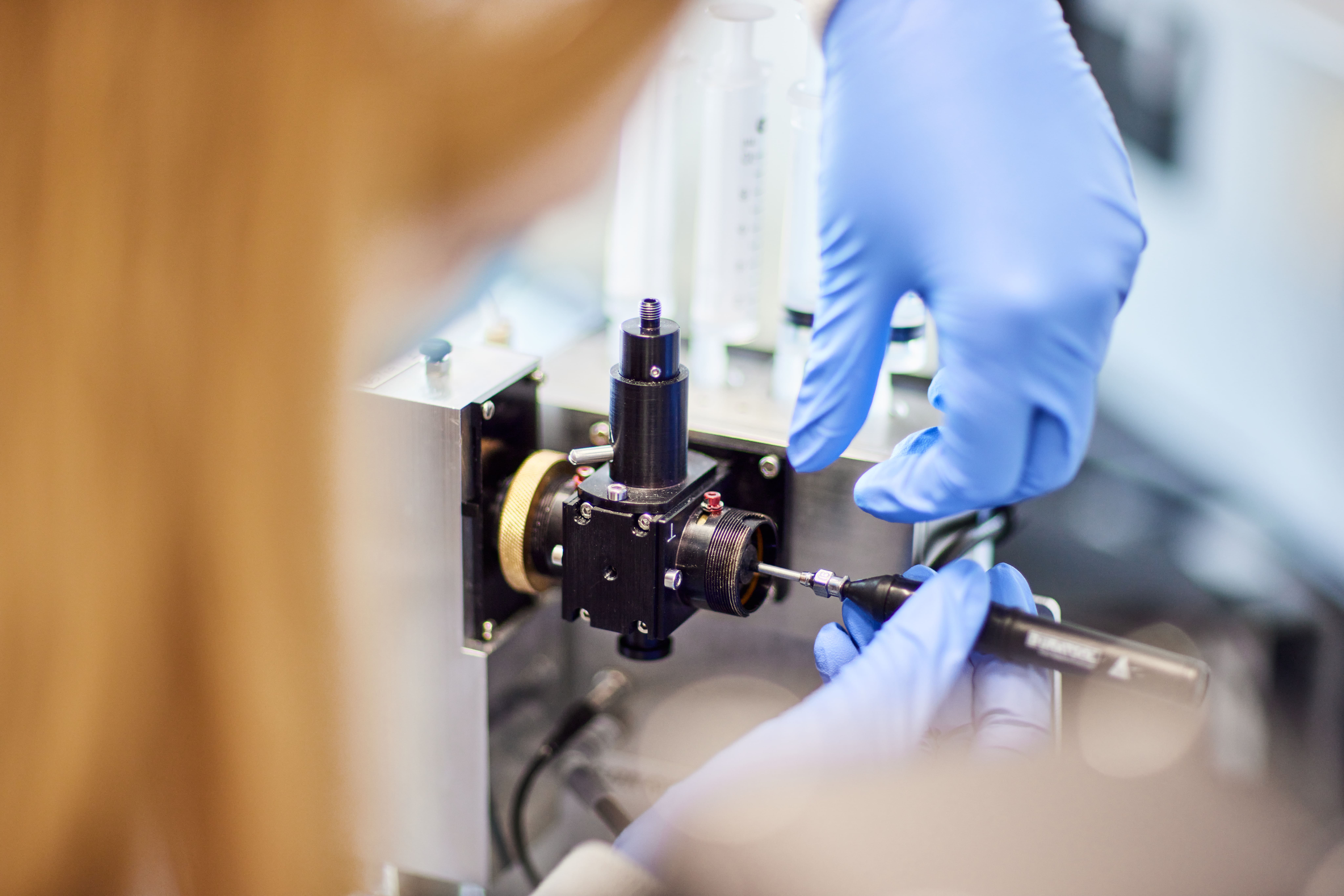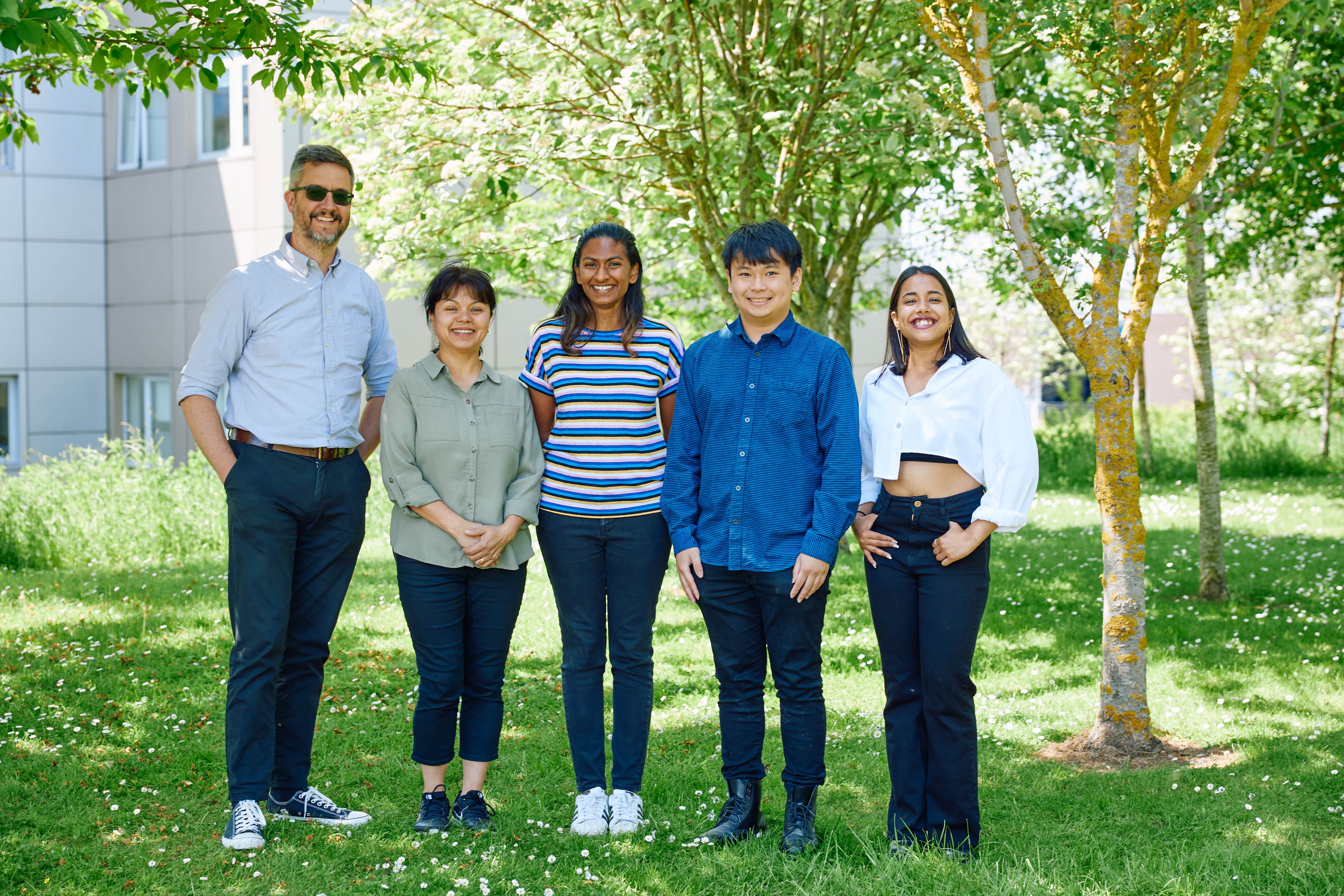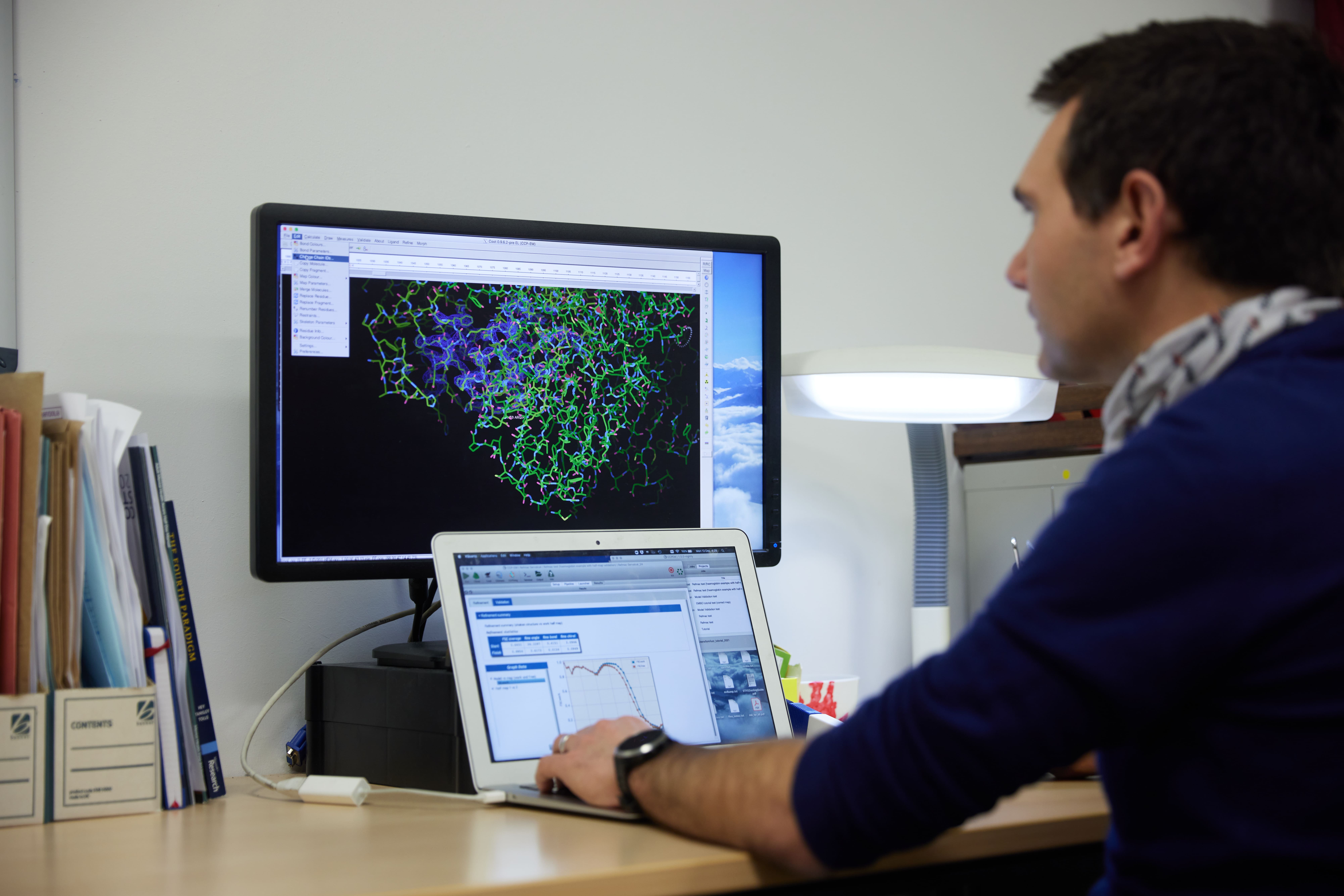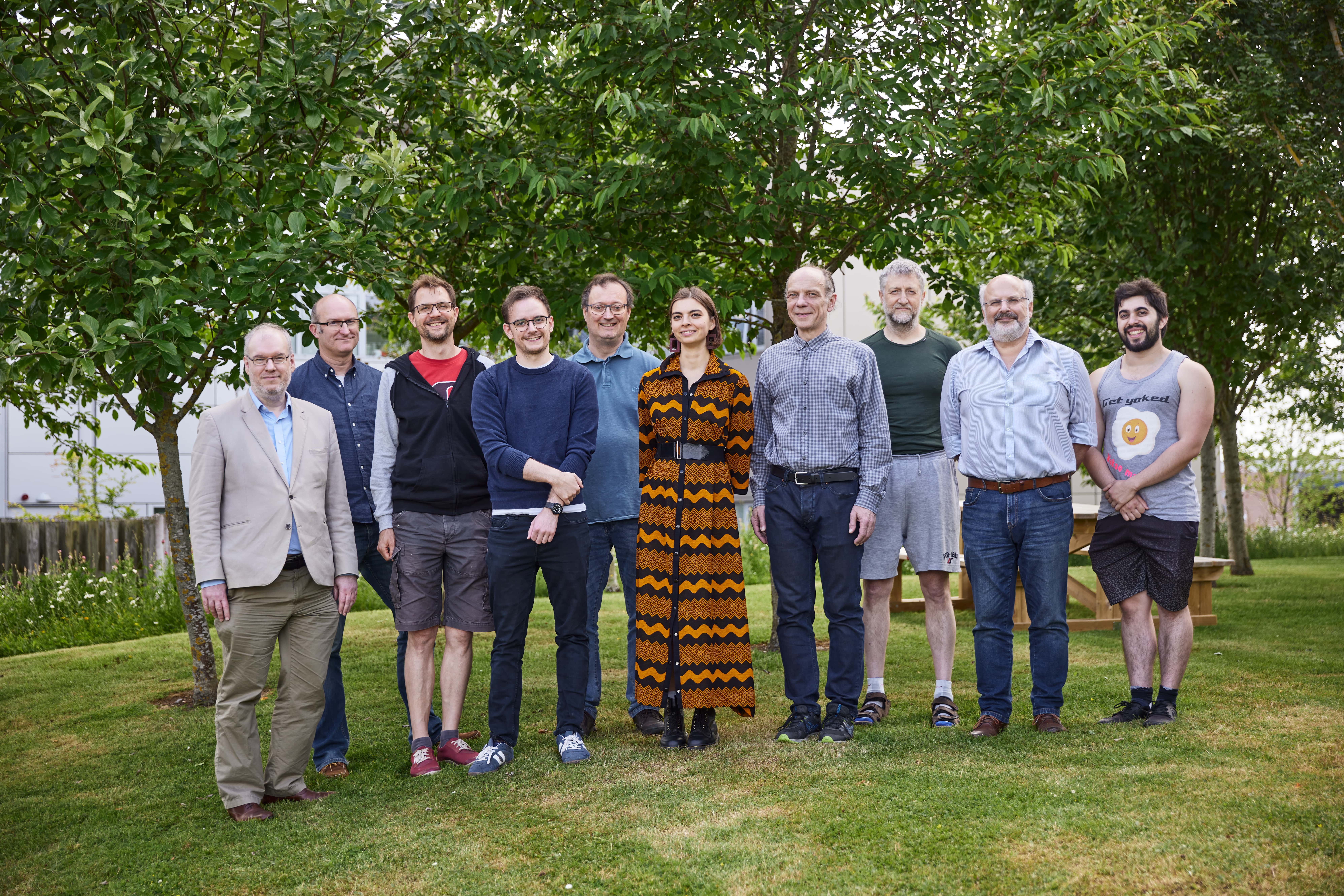Analytical Ultracentrifugation
Research Complex has two Beckman Coulter analytical ultracentrifuges; an Optima AUC and a ProteomeLab XL-I. Both instruments have two integrated detection systems; Rayleigh Interference and Scanning UV/VISIBLE optics, which are designed to detect, measure, record and analyse the movement of molecules in solution under a centrifugal field. The Optima AUC offers faster data collection, at higher resolution, and is particularly suited to multi-wavelength experiments.
There are two main types of analytical ultracentrifugation experiment: Sedimentation Velocity (SV) and Sedimentation Equilibrium (SE):
- SV is a hydrodynamic technique that is sensitive to the mass and shape of the macromolecule. A moving boundary is formed on the application of a strong centrifugal force and a series of scans are recorded at regular intervals, which determines the rate of movement and the broadening of the boundary as a function of time. SV can be used to determine molecular shape and conformational shape changes; molecular mass and sub-unit stoichiometry; and assembly and disassembly of molecular complexes. It is ideally suited for the analysis of heterogeneous samples.
- SE is a thermodynamic technique and is sensitive to the mass but not the shape of the macromolecule. Experiments are performed at lower speeds and measure the equilibrium concentration distribution of macromolecules formed when sedimentation is balanced by diffusion. SE can be used to determine absolute molecular mass of the complexes present in solution, and equilibrium constants for self-associating and hetero-associating systems.
SV and SE provide complementary information and are often both applied to the same problem. SV and SE can be combined in a Gravity Sweep experiment, which facilitates analysis of samples over a very large range of sedimentation coefficients, and is particularly suited for the characterisation of nanoparticles in solution.
